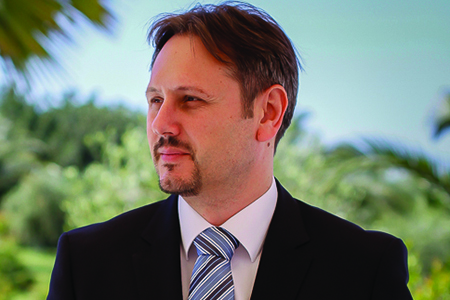The Great Regulatory Catch-Up: Shortcuts To Compliance For Medical Devices Manufacturers
By Elvis Pacelat
 The medical device market is about to succumb to a raft of substantial international regulatory changes, starting with Europe’s medical device regulation (MDR) in May 2020, as public pressure and industry authorities call for greater accountability for patient safety. The changes will include requirements for regular checks and reports on a product’s efficacy and impact once it has been released into the real world.
The medical device market is about to succumb to a raft of substantial international regulatory changes, starting with Europe’s medical device regulation (MDR) in May 2020, as public pressure and industry authorities call for greater accountability for patient safety. The changes will include requirements for regular checks and reports on a product’s efficacy and impact once it has been released into the real world.
However, this is not uncharted territory. The level of regulatory scrutiny now being applied to medical devices has long been applied to the pharma industry. So, with some adaptation, many of the lessons learned can be transferred to the medical device sector to save firms a lot of time, cost, and pain.
Many drug companies are now developing quite sophisticated, business-serving solutions in anticipation of the latest requirements due to affect them under ISO IDMP (Identification of Medicinal Products). But, medical device manufacturers don’t have long to get their houses in order: The EC’s new MDR will be in place in about a year from now, with the equivalent in vitro diagnostic medical device regulation (IVDR) to follow two years later.
One of the most critical areas of focus of MDR and IVDR is post-marketing surveillance and follow-up research and feedback as medical devices enter medical/patient use. Once the new regulations are in force, it will be incumbent on device manufacturers to formally monitor the long-term safety of their products. They will be expected to provide evidence of their follow-up findings in periodic safety update reports.
REAL-WORLD MARKET SURVEILLANCE
One clear requirement is the ability to capture and process post-market safety data. MDR demands a detailed summary of safety and clinical performance information, which must be updated and reported at regular intervals with post-market clinic follow-up findings — a combination of formal studies, feedback from patients and GPs, and, potentially, commentary captured via public online patient forums and social media platforms.
Crucially, the new post-market surveillance requirements will apply to every category of medical device, not just life-critical implants and the like. This will create substantial monitoring and reporting workloads for manufacturers. The implications of falling short of authorities’ expectations could be significant, ranging from multimillion-dollar fines and products being taken off the market to lasting reputational damage.
And these requirements are unlikely to end at EU borders. In the United States, more than 1.7 million injuries and almost 83,000 deaths are suspected to have been linked to medical devices, due to inadequate checks into manufacturers’ safety claims, based on reports to the FDA over a 10-year period. And the International Medical Device Regulators Forum (IMDRF) has a keen interest in MDR and IVDR, which could result in countries in Asia and South as well as North America adopting their own variations on the requirements in the coming years.
The first takeaway from pharma’s experiences is not to see the coming changes as a single event that manufacturers can plan for with a definitive, one-stop project. The global regulatory climate is continuously evolving, so trying to pin down all requirements up front or waiting until all the final variables are known before getting going is not a practical approach.
Striving for broader efficiency gains will serve medical device manufacturers well as they are required to provide better information directly to patients, for instance, online advice about the life span of a product or guidelines about airport safety for users of pacemakers.
Certainly, with EC deadlines for new regulatory compliance bearing down, medical device manufacturers need to develop an action plan sooner rather than later.
ELVIS PAĆELAT is VP of compliance management at AMPLEXOR Life Sciences. He is a business and technology executive with more than two decades of international experience in the life sciences market.
